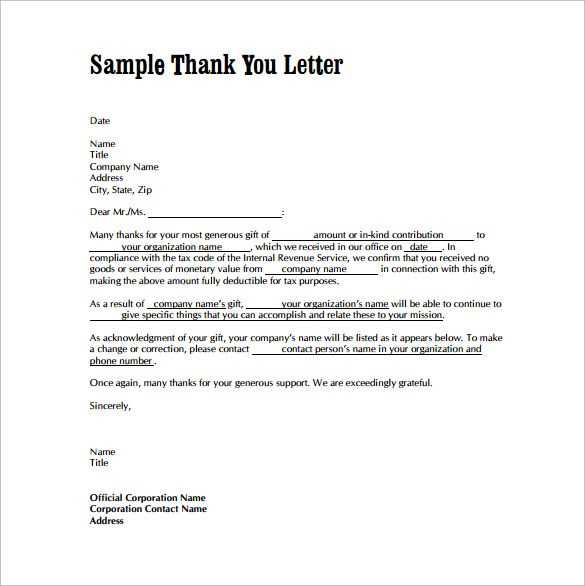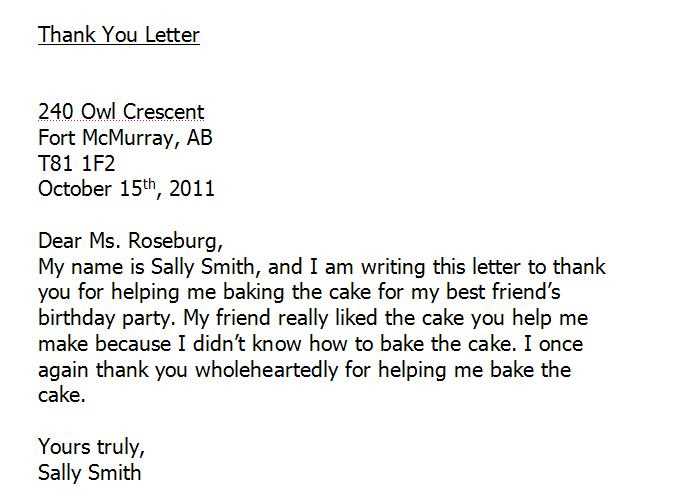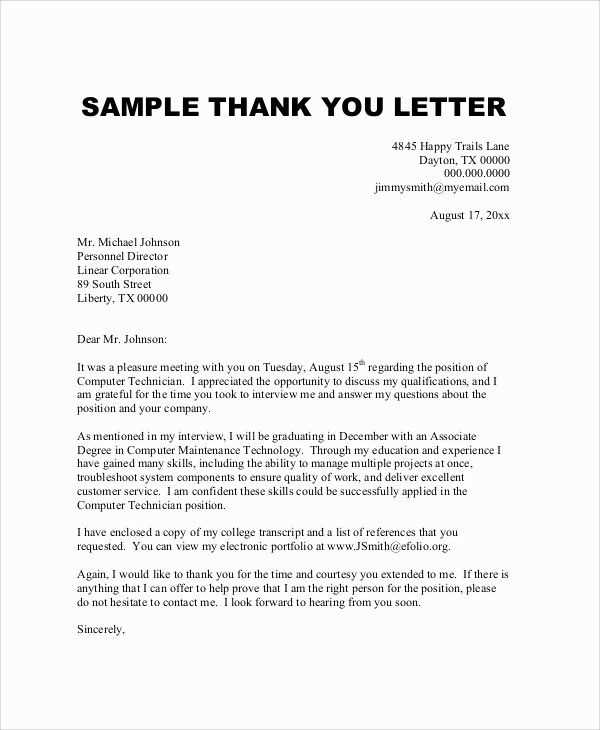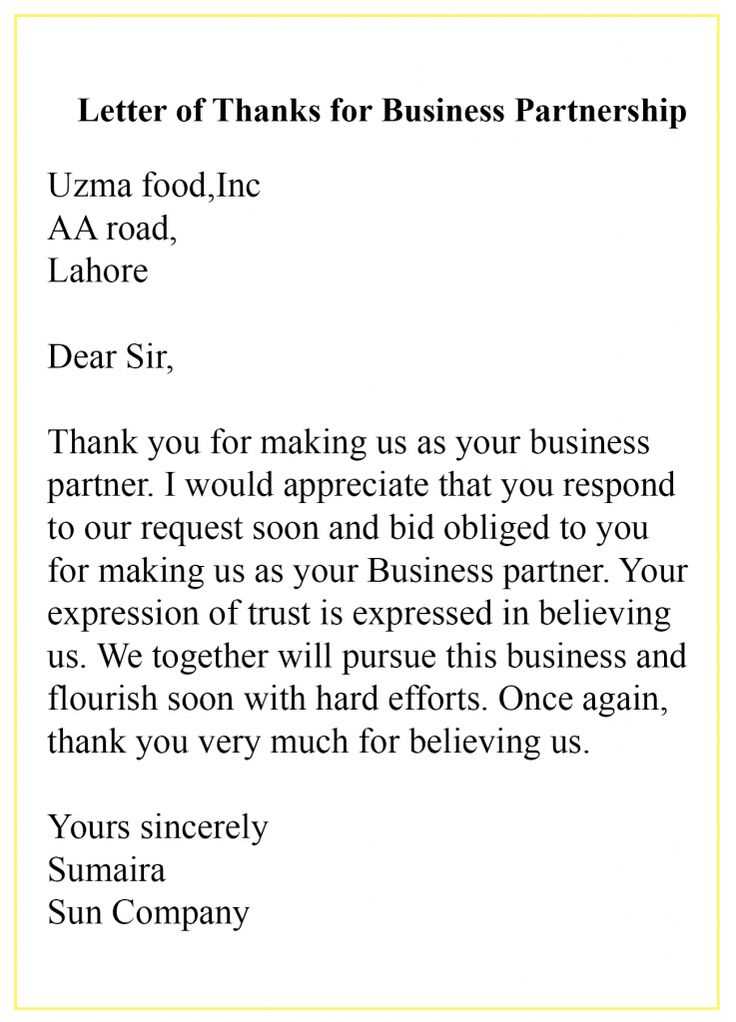Official thank you letter template

When writing an official thank you letter, clarity and professionalism are key. Follow this structure for an effective, polite, and respectful note.
Letter Structure

- Subject Line: Keep it clear and concise. Example: “Thank You for Your Support” or “Appreciation for Your Assistance”.
- Greeting: Address the recipient properly, using their title and last name. Example: “Dear Mr. Smith” or “Dear Dr. Johnson”.
- Opening Paragraph: Express your gratitude right away. Mention the specific action or favor that you are thanking the person for.
- Middle Paragraph: Elaborate briefly on how their support or action has impacted you. Be genuine in your appreciation.
- Closing Paragraph: Reiterate your thanks and express your desire to continue your relationship. Include a positive statement for future interactions.
- Sign-Off: End with a formal sign-off such as “Sincerely,” followed by your name and position.
Template Example

Subject: Thank You for Your Assistance
Dear Mr. Smith,
I want to take a moment to express my sincere gratitude for your help during the recent project. Your insights and expertise were invaluable in ensuring its success.
Your support has made a significant difference in our team’s performance, and I truly appreciate the time and effort you put into assisting us. I am confident that we will continue to achieve great results moving forward, and I look forward to collaborating with you again.
Once again, thank you for your dedication and assistance. I hope to continue working together and building on the success we’ve achieved so far.
Sincerely,
John Doe
Project Manager
Official Thank You Letter Template: A Practical Guide
Choosing the Right Tone for Your Letter of Gratitude
Key Elements to Include in an Official Thank You Note
How to Express Appreciation Professionally
Formatting and Structuring Your Thank You Message
When to Send a Gratitude Letter
Common Mistakes to Avoid in Thank You Notes
For a professional thank you letter, your tone must be sincere yet formal. Avoid being overly casual or too effusive. Strive for a balance between appreciation and respect for the recipient’s time and effort. The tone should match the context–whether it’s a job interview, a business meeting, or a collaborative effort. Keeping your language clear and direct ensures that your message is well-received.
Key Elements to Include in an Official Thank You Note
Your thank you letter should include three core components: acknowledgment of the specific favor or opportunity, a brief reflection on its impact, and a closing statement that reaffirms your gratitude. Start by addressing the recipient by name and express appreciation for their time or help. Mention specifics about the action or gesture you are thankful for to make your note personal and meaningful. Close by expressing how much you value their support or collaboration.
How to Express Appreciation Professionally

To express appreciation professionally, focus on the positive outcomes or lessons learned from the recipient’s help. Avoid vague statements like “thanks for everything.” Instead, say something like “I appreciate your detailed feedback during our meeting last Tuesday. It helped clarify several important points.” Being specific shows that you truly value the recipient’s contribution, making your note more impactful.
In terms of formatting, ensure your letter is clear and concise. Keep paragraphs short and avoid long blocks of text. The structure should follow a traditional business letter format, with your contact information at the top, followed by the date and the recipient’s information. The body of the letter should be aligned left with appropriate spacing between paragraphs.
Send your letter promptly after the event or interaction. A thank you letter sent within 24-48 hours is ideal. Timing shows that you are thoughtful and respectful of the recipient’s effort, rather than just fulfilling a formality.
Avoid the following common mistakes in thank you letters: using generic language, neglecting to proofread for grammar errors, or sending a letter too late. Personalize the content to make your appreciation feel authentic, and double-check for any spelling or punctuation issues to maintain professionalism. Also, avoid being overly familiar or informal, especially if the context is more formal in nature.